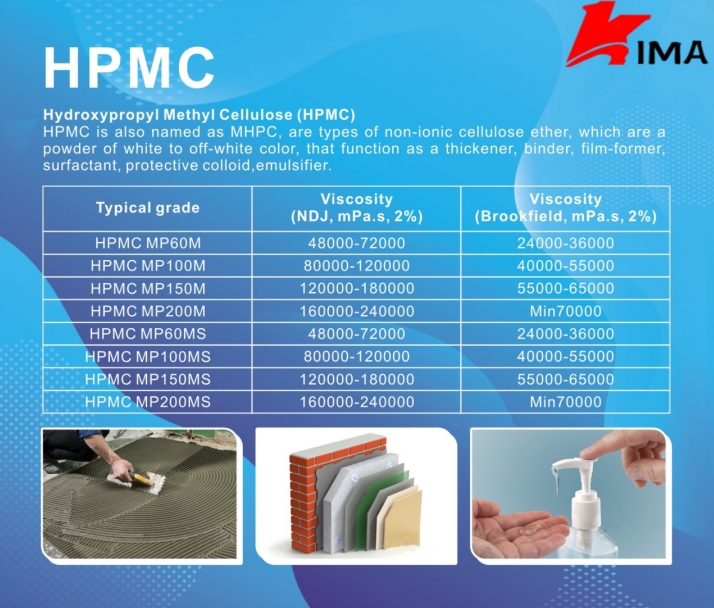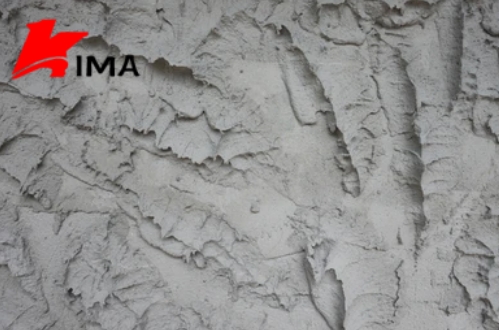Hydroxypropyl methylcellulose ether (HPMC) is a thickener and water-retaining agent commonly used in cement-based materials. It has a significant impact on the rheological properties of cement slurries. In cement slurries, polycarboxylate superplasticizer (PCE) is a commonly used dispersant that can significantly improve the fluidity of the slurry. Research has found that the combined effect of HPMC and PCE has a significant impact on the rheological properties of cement slurry, which can improve the working performance and durability of cement slurry.

1. Characteristics of hydroxypropyl methylcellulose ether
HPMC is a non-ionic water-soluble polymer material with good thickening, film-forming, water retention and dispersion properties. It can increase the viscosity of the cement slurry by forming a physical gel network structure, thereby reducing the segregation and bleeding of the slurry. HPMC molecules have hydrophilic and hydrophobic groups, so they can play a thickening and foam stabilizing role in cement slurries, thereby improving the viscosity and uniformity of the slurry.
2. The role of polycarboxylate superplasticizer in cement paste
Polycarboxylate superplasticizer is an efficient cement dispersant. By adsorbing on the surface of cement particles and providing steric hindrance, it can significantly improve the dispersion of cement particles, reduce the yield stress and plastic viscosity of the slurry, and make the slurry more easily flow. The molecular structure of PCE contains carboxyl and polyoxyethylene segments, which make it have good water solubility and dispersibility. Therefore, PCE can effectively improve the fluidity of cement slurry, reduce the water-cement ratio of the slurry, and improve the material after molding. density and strength.
3. Effect of the compound of HPMC and PCE on the rheological properties of cement slurry
The combined effect of HPMC and PCE in cement paste has a significant impact on the rheological properties of the paste. HPMC controls fluidity by increasing the viscosity of the slurry, while PCE improves fluidity through dispersion. Therefore, reasonable adjustment of the ratio of HPMC and PCE can improve the stability and viscosity of the slurry without significantly reducing its fluidity. The main impact mechanisms are as follows:
Balance of yield stress and viscosity: The thickening effect of HPMC increases the yield stress and viscosity of the slurry, while PCE reduces the yield stress and viscosity by reducing the adsorption between cement particles. Therefore, the compounding of HPMC and PCE can achieve a balance between yield stress and viscosity, thereby achieving the required rheological properties.
Effect of HPMC on PCE dispersion: The presence of HPMC will affect the adsorption distribution of PCE on the surface of cement particles, which may lead to a decrease in the adsorption capacity of PCE, thereby reducing its dispersion effect. However, an appropriate HPMC content can make the slurry have higher stability, avoid the over-dispersion effect caused by PCE, and make the cement slurry have moderate fluidity.
Structural hydration control: The addition of HPMC can form a cellulose network, reduce free water in the slurry, and delay the hydration reaction rate. This effect can effectively control the water loss of the slurry in the early stage and maintain the workability of the slurry. During the structural hydration process, PCE helps the cement particles to disperse evenly and reduce agglomeration, thus making the hydration more uniform.

4. Applications and challenges of compounding HPMC and PCE
The compounding technology of HPMC and PCE has great potential in practical applications. By adjusting the dosage of HPMC and PCE, the slurry performance can be optimized to achieve higher construction performance and durability. However, due to the high viscosity characteristics of HPMC, when the dosage is large, it is easy to cause the fluidity of the slurry to decrease significantly, limiting its application in ultra-high fluidity requirements. In addition, the interaction between HPMC and PCE behaves differently under different cement types and environmental conditions, which also brings uncertainty in application. Therefore, in order to better control the rheology of cement paste, it is necessary to fully consider the synergistic mechanism of the two and their impact on the microstructure of the paste when designing the formula.
HPMC and PCE have different mechanisms of action on the rheology of cement slurries: HPMC improves the viscosity and stability of the slurry through thickening and water retention, while PCE improves the fluidity of the slurry by dispersing cement particles. When used in combination, the two can effectively improve the workability of the slurry and provide guarantee for the durability of cement-based materials.
At Kima Chemical, we offer an extensive range of cellulose ether products, including wholesale HPMC, designed to meet a variety of industrial needs. Our competitive pricing and broad selection make us a trusted supplier for businesses looking for quality materials at cost-effective rates.
 English
English 日本語
日本語 français
français Deutsch
Deutsch Español
Español italiano
italiano русский
русский português
português العربية
العربية Türkçe
Türkçe Nederland
Nederland





